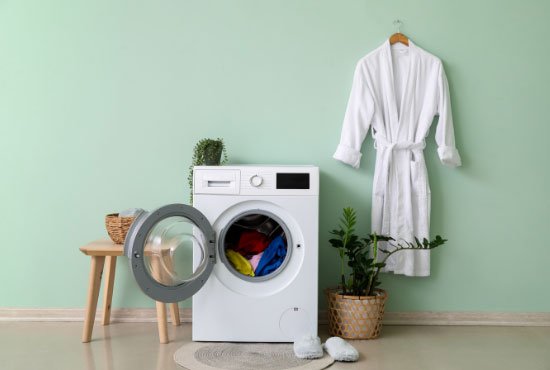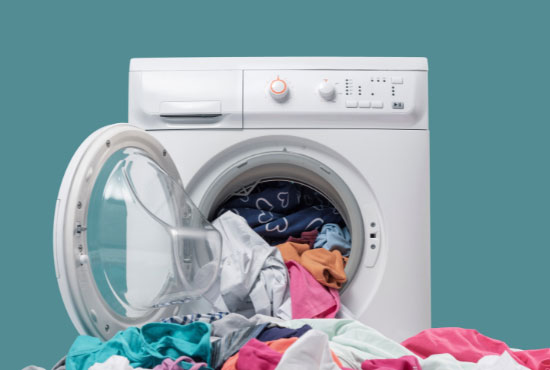The washing machines you use today are based on the design of the 1908 appliance. There have been some size and cosmetic changes over the years, but the machines’ basics are still the same.
You must admit that having a washing machine to clean your laundry is more accessible than a rub board or beating your clothes on a rock. Many years ago, a woman took the majority of one day each week cleaning the clothes her family wore. Today we are so lucky that we can do a load of laundry in about one hour.
Suppose you are like most people; you never give your washing machine a second thought unless you have problems with it. Let’s take a few minutes and consider these appliances.
How Much Does a Washing Machine Weigh?

Just the wringer portion of the 1932 Maytag machines weighed 37 pounds. The size and style of the machine that you have made a big difference in the weight of the appliance.
Top-loading machines have been the industry standard for many years. These appliances usually weigh close to 150 pounds.
The newer, and more efficient front-load machines save energy and water but they weigh closer to 180 pounds.
You should use a furniture dolly and the help of a friend if you plan to try and move your washing machine. You should also make certain that you drain the machine before you move it. Even when the machine tub appears empty there is often some water left in the pumps and hoses.
A Full Machine

A top-loading washing machine can use as much as forty gallons of water to wash a load of clothing. Generally, the machine uses 8 to 10 gallons for each cycle such as wash and rinse.
Water weighs a little more than 8 pounds per gallon. If your top loading machine weighs 150 pounds, and you add ten gallons, or 80 pounds of water to that, and about 8 pounds of dirty clothing, then your machine may weigh as much as 238 pounds or more at different times.
1846
One of the earliest washing machines was patented in the United States in 1846. The machine was a rub-board style tub that had a manually operated wringer that you fed the clothing through while turning a crank handle. The wringer pushed the excess water from the pieces of clothing and allowed them to dry more quickly on the clothesline.
The first automatic machine did not get introduced until 1937. These machines did not provide drum suspension so they had to be anchored in place. They were very expensive.
The invention of the automatic washing machine allowed women to do their chores much faster and it let women have an opportunity to work outside of the home, yet still keep their family clean.
Did You know?
- The front-load washing machines are as much as 50% more efficient than a top-load machines?
- Hot water kills more germs in the clothing than warm or cold water does.
- Most washing machines, at least 90% of them, are operated regularly by women and not men.
- An eight-pound load of laundry contains about 53 grams of grime. This is partially due to the fact that your body produces so much sweat and so many skin cells flake off of it.
- The washing machines of today use about 2/3 less water than the top load machines of the past. In the past, a washing machine used as many as 40 gallons of water but today machines use as few as 13 gallons of water.
- The spin-free washing machine started to replace the wringer machines in 1950.
- The average family of four washes between eight and ten loads of clothing each week.
- About ¼ of the water used in the United States is used in washing machines and laundry services.
- Before the electric washing machine became popular there were versions that were powered by steam and even gasoline.
- The average washing machine may cost between $250 to $1000 dependent on the design, manufacturer, and features you choose.
- White vinegar is excellent for cleaning your washing machine
- The first washing machine that was mass-produced was named Thor.
- Laundry detergent was not manufactured until 1916.
- In the 1920s a washing machine would cost you about $81.50
- The clothes dryer did not become a household item until the 1960s.
FAQs
Why Do I Need To Drain My Washing Machine Before Moving It?
Your washing machine does not wholly expel all the water when you wash a load of clothes.
Why Should I Leave My Washing Machine Door Open After Use?
A. Leaving the door open or the lid up allows the condensation and excess moisture to escape and helps prevent mildew from forming in the machine.
Will A Washing Machine Without An Agitator Clean My Clothes?
The new technology that allows a washer to work without an agitator will enable the device to get clothes clean. However, the agitator does provide a more thorough cleaning process.
